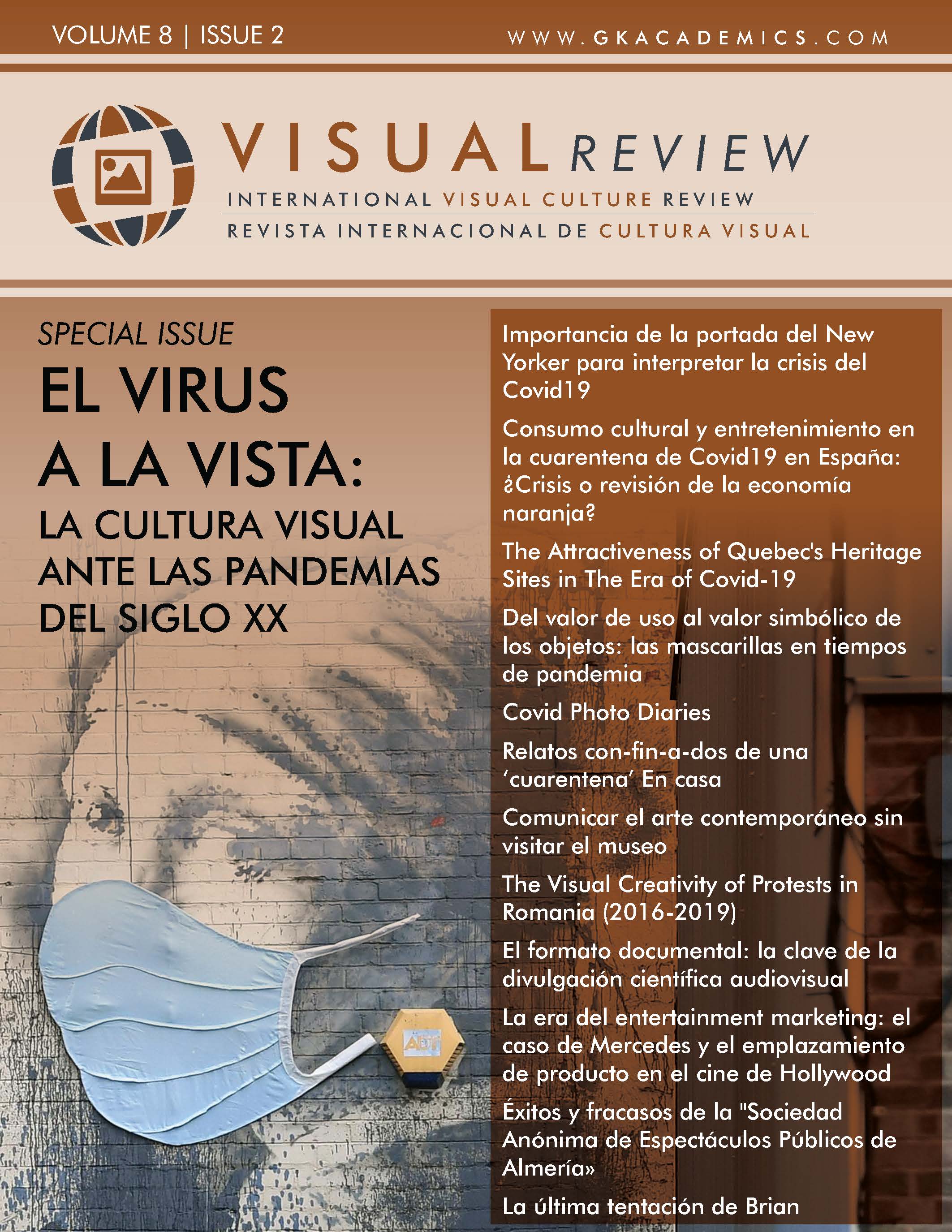The Age of Entertainment Marketing: The Case of Mercedes and Product Placement in Hollywood Cinema
DOI:
https://doi.org/10.37467/gka-revvisual.v8.2852Keywords:
Mercedes, Product placement, North American cinema, Entertainment marketing, Brand placementAbstract
We are in the era of “entertainment marketing”, which arises as a union between the consumer and entertainment needs, as technology consumers are no longer conceiving advertising as something flat and promotional. This article focuses on Mercedes' application of product placement advertising techniques in North American cinema, with an aim of transmitting its brand values: quality, luxury, style, and fashion. To obtain the results, quantitative and qualitative research techniques have been used, as well as content analysis following the methodology proposed by Méndiz.
Downloads
Global Statistics ℹ️
|
845
Views
|
400
Downloads
|
|
1245
Total
|
|
References
Balasubramanian, S. (1994). Beyond Advertising and Publicity: Hybrid Messages and Public Policy Issues. Journal of Advertising, 23(4),29-46. DOI: https://doi.org/10.1080/00913367.1943.10673457
Baños, M. y Rodríguez, T. (2003). Product Placement. Estrella invitada: la marca. Madrid: CIE-Dossat.
Dean, P. (1993). Star Vehicles, the right movie role can polish an image and pup up earning power. Los Ángeles Times.
Del Pino Romero, C. y Olivares Segovia, F. (2006). Brand Placement. Integración de marcas en la ficción audiovisual. Barcelona: Gedisa.
Eckert, C. (1978). The Carole Lombard in Macy´s Windows. Quarterly Review of Film Studies, 3(1), 1-21. DOI: https://doi.org/10.1080/10509207809391376
Enginkayan, E., & Hakan, Y. (2014). What drives consumers to interact with brand through social media?. Sciencedirect, 148, 219-226. DOI: https://doi.org/10.1016/j.sbspro.2014.07.037
González, I. (2018). Emplazamiento de producto en las redes sociales. Salamanca: Universidad de Salamanca.
Guerrero, E. (2018). La fuga de los millenials de la televisión lineal. Revista Latina de Comunicación Social, 73, 1231-1246. DOI: https://doi.org/10.4185/RLCS-2018-1304
Karrh, J. (1994). Effects of Brand Placements in Motion Pictures. Conference of the American.
Liener, A.(2010). Mercedes-Benz GLK-Class Preps for Sex and the City Debut. Edmunds. http://www.edmunds.com/insideline/do/News/articleId=126075
López, R. (2015). Product Placement, la publicidad de moda, según Nielsen. Marketing Directo. Acceso el 15 de Enero 2017. https://www.marketingdirecto.com/marketing-general/tendencias/product-placement-la-publicidad-de-moda-segun-nielsen
Martín, A. (2020). El emplazamiento de Hollywood del cine de Hollywood en películas dirigidas a un público joven. Análisis de casos del sector del automóvil. Revista Inclusiones, 7, Especial Octubre-Diciembre.
Méndiz Noguero, A. (2000). Nuevas Formas Publicitarias: Patrocinio, Product Placement, Publicidad en Internet. Málaga: Universidad de Málaga.
Movilla Mengual, L. (2009). La función de comunicación comercial del product placement y su influencia en los sistemas de producción audiovisual. [Tesis doctoral, Universidad Complutense].
Nebenzahl, I., & Secunda, E. (1993). Consumers' Attitudes Toward Product Placement in Movies. International Journal of Advertising, 12, pp. 1-11 DOI: https://doi.org/10.1080/02650487.1993.11104518
Newel, J. (2005). Product integration is as old as Hollywood itself. The Hollywood Reporter, 28, 6.
Ramos Serrano, M. (2006). Cuando la marca ofrece entretenimiento: aproximación al concepto de advertainment. Questiones Publicitarias, 1(11), 33-49. DOI: https://doi.org/10.5565/rev/qp.134
Ramos Serrano, M. y Delgado Brull, M. (2007). Las nuevas estrategias de comunicación en el sector automovilístico: razón y emoción en las campañas de Audi. Sevilla: Universidad de Sevilla.
Torrano Palazón, J. (2007). La efectividad del emplazamiento del producto en las películas. Un análisis intercultural entre los consumidores franceses y españoles. [Tesis doctoral, Universidad Politécnica de Cartagena].
Victoria Mas, J. S. (1999). Hollywood y las marcas. Madrid: New Book Ediciones.
Victoria Mas, J. S. (1999b). Presencia, comunicación y estrategia de las marcas comerciales en la ficción audiovisual (“product placement” o “emplazamiento de producto”). La producción cinematográfica de Hollywood y el caso español. [Tesis doctoral, Universidad de Málaga]
Downloads
Published
How to Cite
Issue
Section
License
Those authors who publish in this journal accept the following terms:
-
Authors retain copyright.
-
Authors transfer to the journal the right of first publication. The journal also owns the publishing rights.
-
All published contents are governed by an Attribution-NoDerivatives 4.0 International License.
Access the informative version and legal text of the license. By virtue of this, third parties are allowed to use what is published as long as they mention the authorship of the work and the first publication in this journal. If you transform the material, you may not distribute the modified work. -
Authors may make other independent and additional contractual arrangements for non-exclusive distribution of the version of the article published in this journal (e.g., inclusion in an institutional repository or publication in a book) as long as they clearly indicate that the work was first published in this journal.
- Authors are allowed and recommended to publish their work on the Internet (for example on institutional and personal websites), following the publication of, and referencing the journal, as this could lead to constructive exchanges and a more extensive and quick circulation of published works (see The Effect of Open Access).













